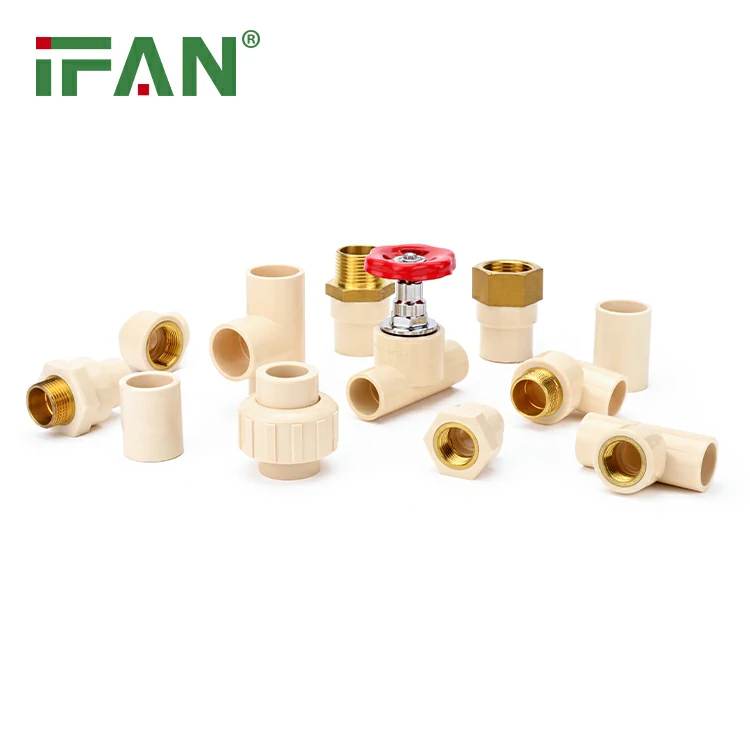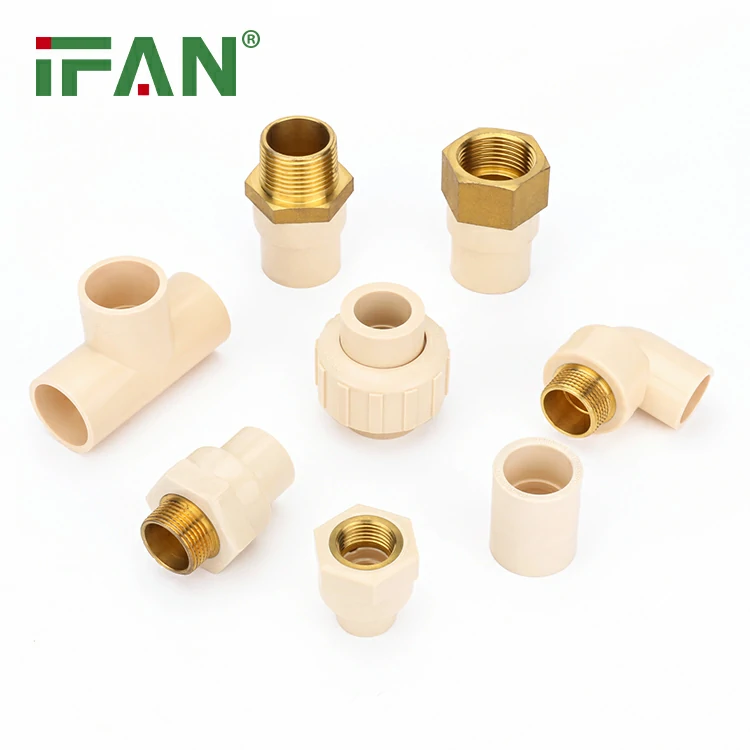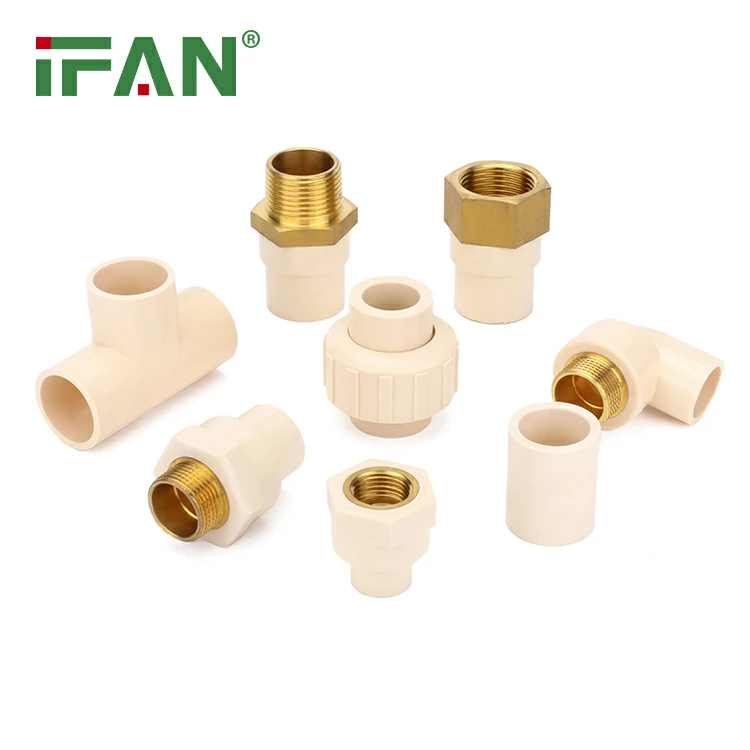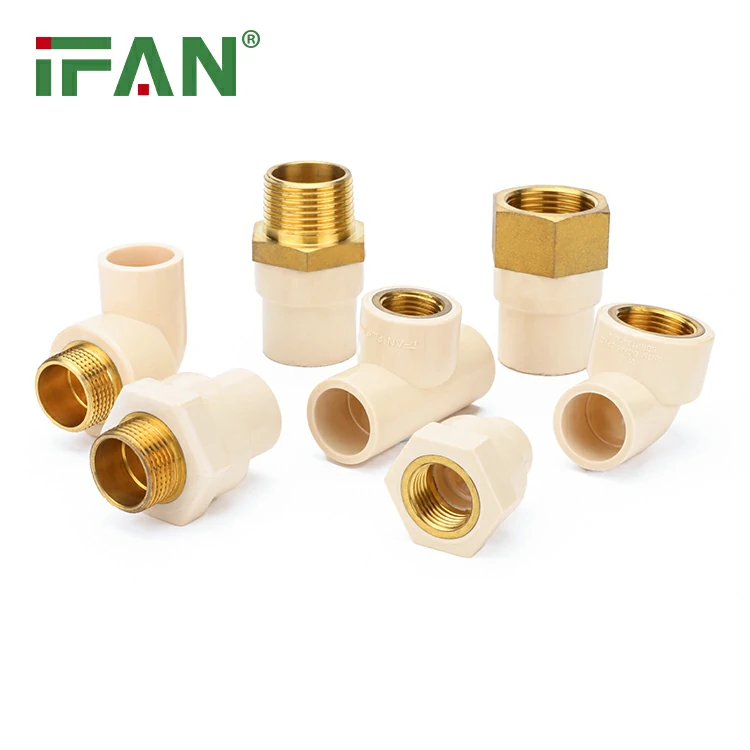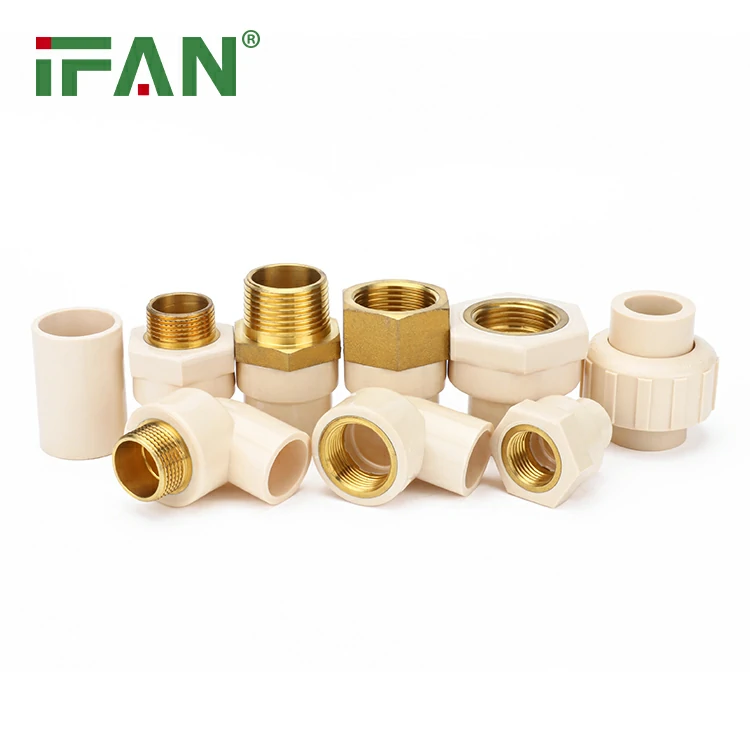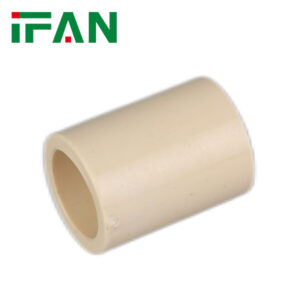IFAN Water Supply CPVC Pipe Fitting
Category : Click Download
Whatsapp : +86 19884503412
Wechat : 19884503412
Description
Introduction to CPVC Pipe Fittings and Installation
CPVC Pipe Fitting is a widely used solution in residential and industrial plumbing systems.
It is favored for its corrosion resistance, affordability, and ease of installation.
Unlike metal fittings, CPVC is joined not by threading but by chemical bonding using solvent cement.
This bonding process creates a leak-free, long-lasting connection that withstands pressure and heat.
To ensure reliable joints, proper glue must be used, designed specifically for CPVC materials.
Why Ordinary Glue Won’t Work
You can’t use regular household glue or adhesives for CPVC Pipe Fitting connections.
Most standard glues don’t have the chemical ability to soften and fuse plastic surfaces.
CPVC requires a solvent cement, not simply an adhesive that holds by friction or cohesion.
Solvent cement melts the surface of the pipe and fitting to form a unified, seamless joint.
Incorrect glue may cause poor bonding, leakage, or failure under high pressure or temperature.
What Is CPVC Solvent Cement?
CPVC solvent cement is a specially formulated glue made for chlorinated polyvinyl chloride (CPVC) plastics.
It temporarily softens the surfaces of both the pipe and the CPVC Pipe Fitting.
When pressed together, the two components chemically fuse and then harden as the solvent evaporates.
The result is a single continuous plastic unit, not just two parts stuck together.
This fusion allows the system to handle hot water, pressure, and vibrations without failure.
Differences from PVC and ABS Cements
Solvent cements come in many types, including for PVC, ABS, and CPVC.
Each type is formulated for its specific plastic composition.
PVC glue cannot substitute for CPVC solvent cement because of differences in chemical behavior.
For example, CPVC glue can withstand higher temperatures than standard PVC glue.
Using the wrong cement for a CPVC Pipe Fitting may lead to compliance violations and mechanical issues.
Color Codes and Application Categories
Most CPVC solvent cements are yellow or orange for easy identification.
Yellow is often used in residential and hot/cold water systems.
Orange is more common in industrial or fire-sprinkler systems with higher performance requirements.
Some universal solvent cements work with both PVC and CPVC but must be certified for both.
When gluing a CPVC Pipe Fitting, always read the product label and ensure proper usage.
Primers and Their Role in Bonding
In many cases, a primer is applied before the CPVC cement.
Primers clean and soften the plastic surfaces for better chemical bonding.
Although not always mandatory, primer improves bond strength and is often required by plumbing codes.
Most primers are purple or clear and dry quickly before cement application.
For best results, use the primer and cement recommended by the same manufacturer.
Correct Installation Procedure
To glue a CPVC Pipe Fitting, cut the pipe square and clean the ends thoroughly.
Apply primer to both the pipe and fitting (if needed), then coat both with solvent cement.
Immediately push the pipe into the fitting with a quarter-turn twist to distribute cement evenly.
Hold the joint for 30 seconds to prevent pushback.
Let the bond cure for 15 minutes before handling, and 24 hours before applying pressure.
Final Thoughts and Best Practices
CPVC Pipe Fitting requires a special type of glue—solvent cement—to ensure strong, lasting connections.
Never substitute with regular glue or PVC-only cement.
Follow all manufacturer guidelines, including the use of primer when recommended.
Proper glue selection and application are critical for safe plumbing systems.
By using certified CPVC cement and proper techniques, your pipework will meet standards and last for decades.
相关产品
- PVC Pipe & Fittings
Beige CPVC Male Socket
- PVC Pipe & Fittings
Beige CPVC Tee
- PVC Pipe & Fittings
Beige CPVC End Cap
- PVC Pipe & Fittings
CPVC Sockets
HAVE ANY QUERIES? SEND TO CONTACTOANTSMACHINE.COM
ONTACT US

